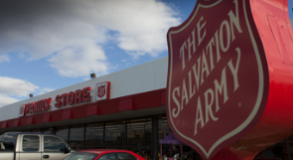Never Miss a Chance to Do the Most Good
Please enter your name, email and zip code below to sign up!
Never Miss a Chance to Do the Most Good
Please enter your name, email and zip code below to sign up!

Our Doors are always open
each year, The Salvation Army provides over 10 million nights of shelter to those in need
bringing positive changes to the lives of homeless people.
Our Emergency Shelter provides a safe, comfortable, clean, and caring Christian environment for homeless persons. Continuance of our program depends upon continued sincere efforts by residents to secure employment housing and/or treatment programs for addictions.
A SAFE PLACE TO STAY.

The Salvation Army
John Gardner Stevenson Family Emergency Shelter
501 Broadway
217.222.8655
24 hours/day, 7 days/week
This exceptional facility serves the greater Adams County area as well as transients who have come to our community and find themselves in a homeless situation. It is the goal of our program to equip our residents with the knowledge and life skills training needed to find employment and suitable, affordable housing that they might become self-sufficient individuals.
The shelter area of the building has 10 rooms that can house up to 14 people with rooms dedicated to single men and women as well as families. The building also houses our Family Services operation and Food Pantry/Breadline. This shelter is the only one within a 100-mile radius that serves this population.
During their stay, residents are required to look for a job or instructed how to save money in order to move into a place of their own, and meet with a caseworker on a regular basis. Our goal is to provide a comfortable, safe environment for our residents. Meals, laundry facilities, phone calls, and other needed items are all provided for those staying in the shelter. A normal stay in the shelter is 30 days, but could be longer or shorter depending on the client’s situation.
SHELTER PURPOSE
The Salvation Army Emergency Shelter exists to bring positive changes to the lives of homeless individuals and families by applying the gospel of Jesus Christ to meet their physical and spiritual needs without discrimination. To that end, our Emergency Shelter provides a safe, comfortable, clean, and caring Christian environment for homeless persons. Continuance of our program depends upon continued sincere efforts by residents to secure employment housing and/or treatment programs for addictions.
>> To provide services necessary to help remove existing barriers in the area of housing, employment, health care, and adequate nutrition
>> To make appropriate referrals to community resources/services in order to assist residents in their efforts to become more stable by obtaining housing, employment, training, etc.
>> To provide volunteer opportunities for members of the community
>> To create an environment based on respect for the inherent dignity and value for each person who comes to The Salvation Army Emergency Shelter for services
>> To provide assistance to residents in their efforts to identify and achieve personal goals and targets
>> To base all interactions with clients and the community within the moral and ethical framework established by The Salvation Army
MEALS
Shelter residents receive three meals a day while they are staying at the shelter.
HISTORY
In 1975, the first Quincy Salvation Army emergency shelter was opened on Broadway. The shelter had four rooms and twelve bunks. Clients were allowed to stay up to three days. Meals were provided by issuing meal vouchers to area restaurants. Prior to the opening of this facility, emergency housing was no more than a night’s lodging at a local motel.
In July 1994, a strategic plan was established for the emergency shelter program. The plan identified the need for longer term emergency housing and more extensive casework. Along with these changes came life skills training and a Community Meals Program, serving 3 meals a day, 7 days a week to the public, in addition to the shelter residents.
Construction on the John Gardner Stevenson Family Emergency Shelter & Family Services Center began in the summer of 2012 and was completed in early 2013 becoming operational on March 22, 2013. The official dedication was held Thursday, May 30, 2013. The new facility is located diagonally from The Kroc Center, making it much easier to coordinate programs once held several miles away.







